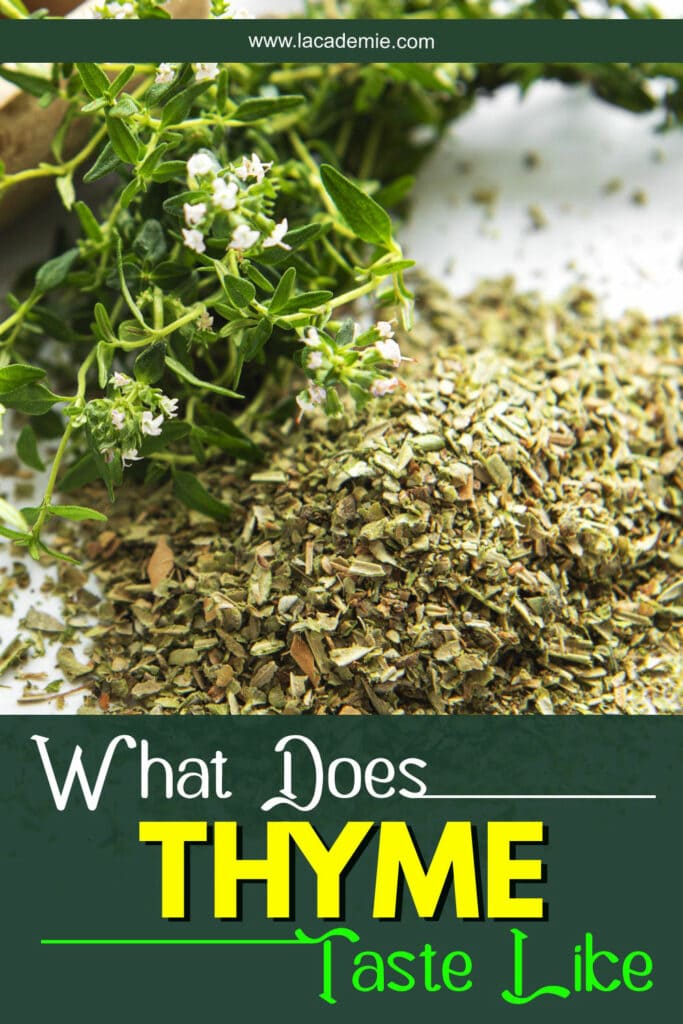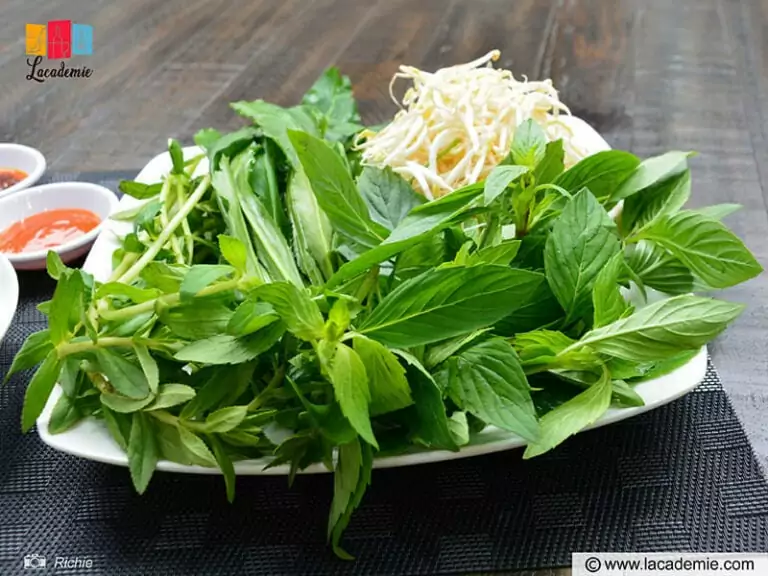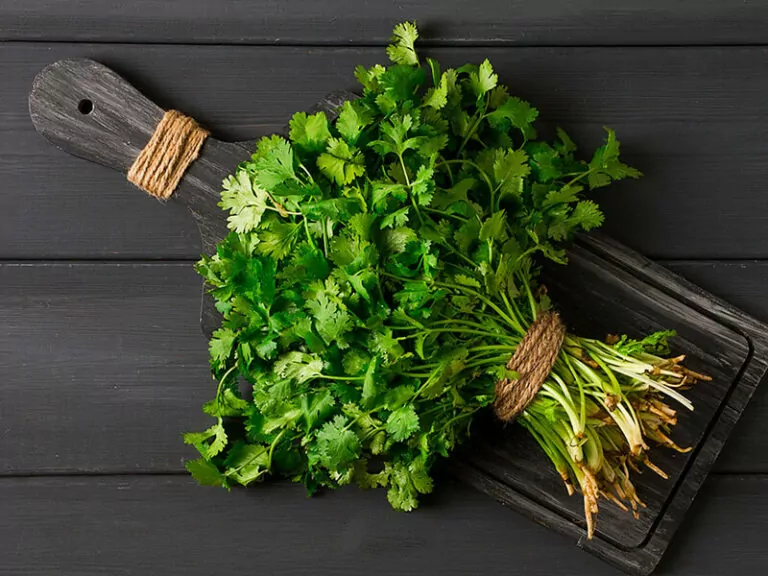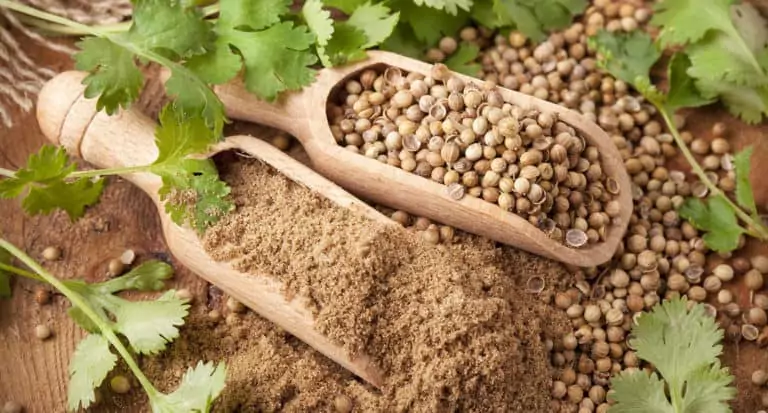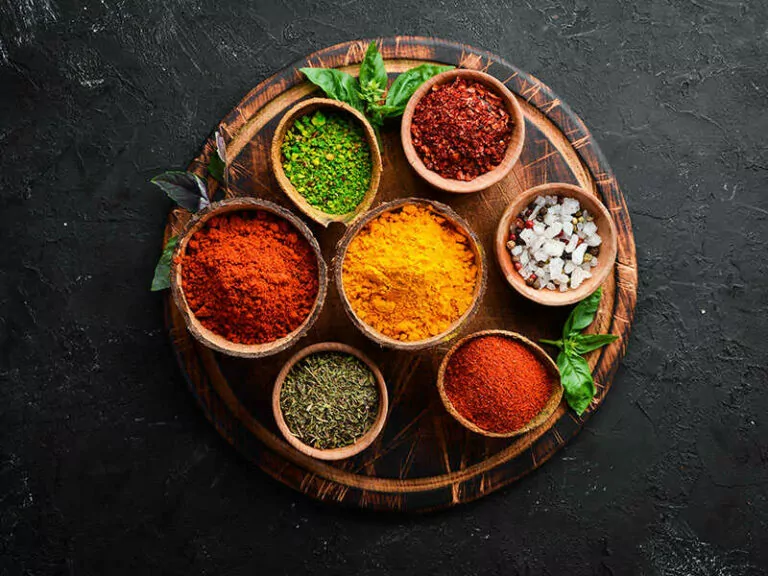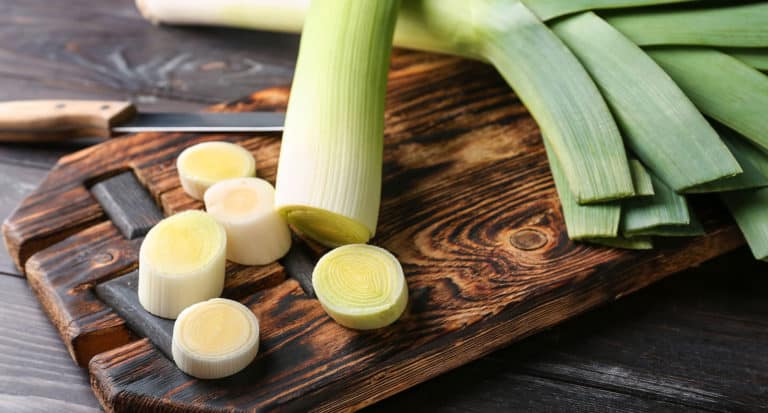“What does thyme taste like” and how to use it properly might be common concerns for many people. Although many excellent cuisines require the appearance of these little herbs, even the high-class French cooking, some information about them remains unclear.
If this is your first time using thyme in your dish, don’t worry because you will find out much fascinating information about thymes, not only limited to taste but also other aspects.
There’s no need for prolonging discussion now; it’s time for me to introduce you to the world of thyme!
Taste Descriptions Of Thymes
Thymes have hundreds of different varieties, and each type has a slight difference in taste and uses. However, the primary flavors of cooking thymes are still a faint scent of florals, savory-sweetness, a warm, pungent aroma, and a hint of mint and pepper.
Due to these characteristics, many people have mistaken thyme for oregano, despite several significant differences between these two herbs in both cooking and other fields. While they do share some similarities, you should be careful before using them interchangeably.
When thymes are cooked for a long time, they will infuse the flavors more evenly and robustly. That is also why they usually use thyme for low-cook methods or add them at the beginning of the cooking process.
Thyme 101- Everything You Should Know About Thyme
Thyme is a genus of evergreen herbs called Thymus from the mint family Lamiaceae. They are believed to originate from the Mediterranean region, specifically the Levant, since you can even see them weedy grown there.
From hundreds of years ago, thymes have been used in various fields. They are mainly used to provide aroma to foods. For example, thymes are an appropriate seasoning to prepare poultry meat. People also use this herb for medicinal or ornamentation.
And thymes have many variants; the one you often meet in your beefsteak might be the most common culinary used: Thymus vulgaris (Common thyme). All Thymus vulgaris or its “siblings” have their stems inedible since they are so tough and chewy.
The edible dried part of thyme is their leaves; they usually dry thyme leaves to store them for a longer time. All the thymes have many similarities since they are all Thymus and share several similar characteristics.
But how are they different from their other “siblings”? Let’s discuss this in the upcoming section!
Thyme And Its Used Culinary Varieties
There are hundreds of thyme varieties, but only some of them are used in cooking. Besides cooking, other thymes are used just for ornament and ground covering. Since this is the herbs guidelines article, I will mainly focus on culinary used thymes.
Now, what they are, how they are, and what they are best used for, I will cover all of that. Just stay tuned and scroll down.(1)
To have a general comprehensive about what they are, I would love to give you brief information with the table below. Check it out!
The above table has only brief information; let’s continue for more detailed and fantastic information about the world of cooking thymes.
1. Common Thyme (Thymus Vulgaris)
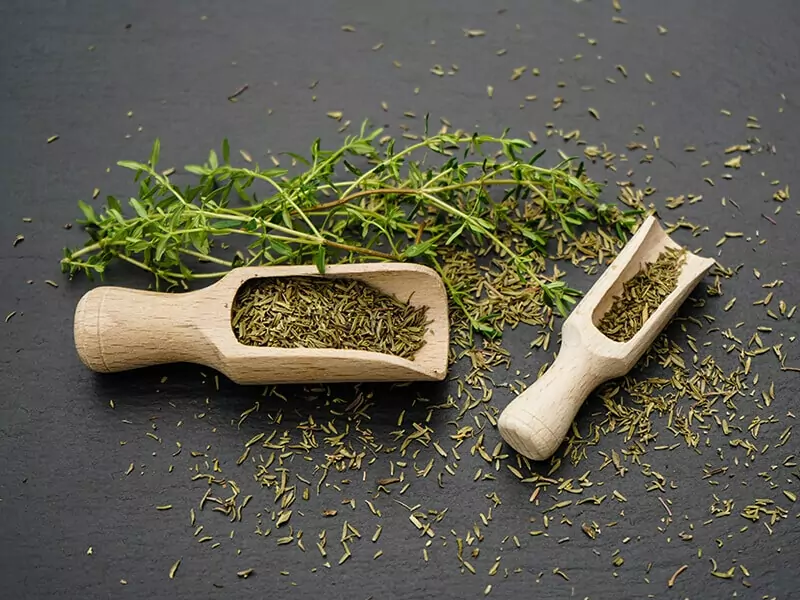
Common thyme, or English, and summer thyme have many other variants. Common thyme leaves are very small, spear-shaped, intensely fragrant in the air, and look like a bushy subshrub with woody stems.
This thyme lends an earthy, minty, and hint of lemony flavor. Thus, it makes a perfect match with beef bourguignon and other meat stews, soups, and chowders. You can even use it to flavor stuffings.
2. Lemon Thyme (Thymus Citriodorus)
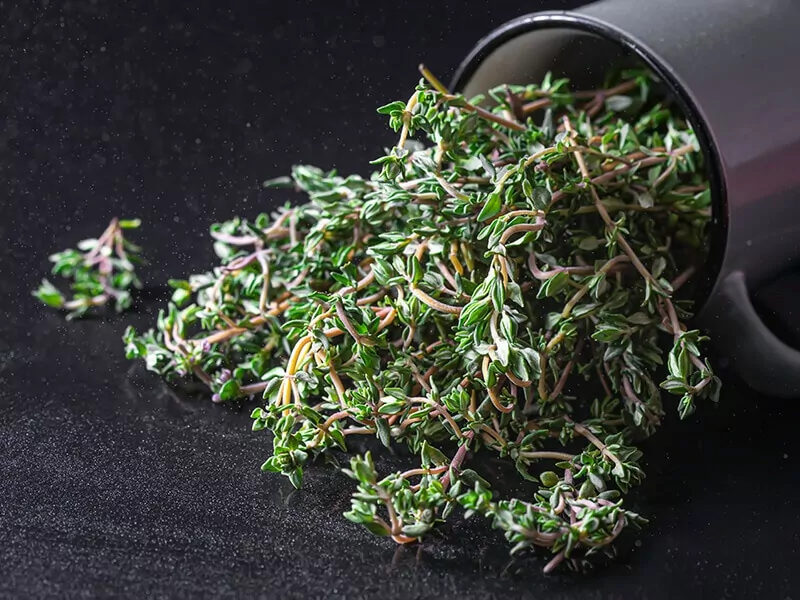
Lemon thyme, orange thyme, or lime thyme, all the names have partly described this type of thyme’s taste. Lemon thyme contributes a much stronger citrusy flavor and scent, nearly no trace of bitterness like some other thyme might leave under heat.
I prefer using this herb as an accompaniment for my roasted vegetables, meat, or fish with the highlighted freshness. Yet, lemon thyme can still be used in any dish that requires thyme, from sauces, stews, seafood to a cup of fine tea.
3. Caraway “Pink” Thyme (Thymus Herba-Barona)
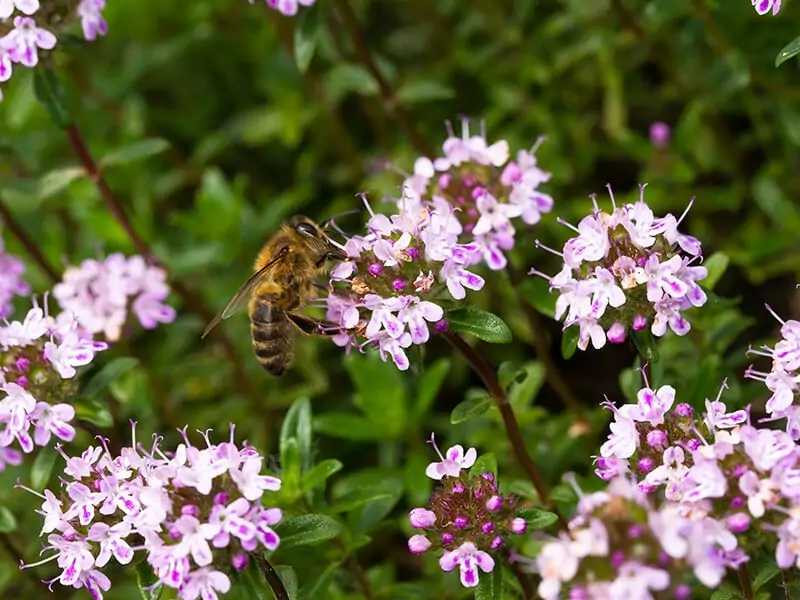
Caraway thyme is a dwarf, evergreen herb with tiny pink, tubular flowers. Its taste is the combination of caraway and thyme; you can feel a little citrusy taste together with mild licorice.
I suggest using caraway pink thyme for meats (especially lamb) to reduce the unpleasant odor and add more flavor. This thyme is also suitable for bread and is a substitute for caraway.
4. Creeping Thyme (Thymus Serpyllum)
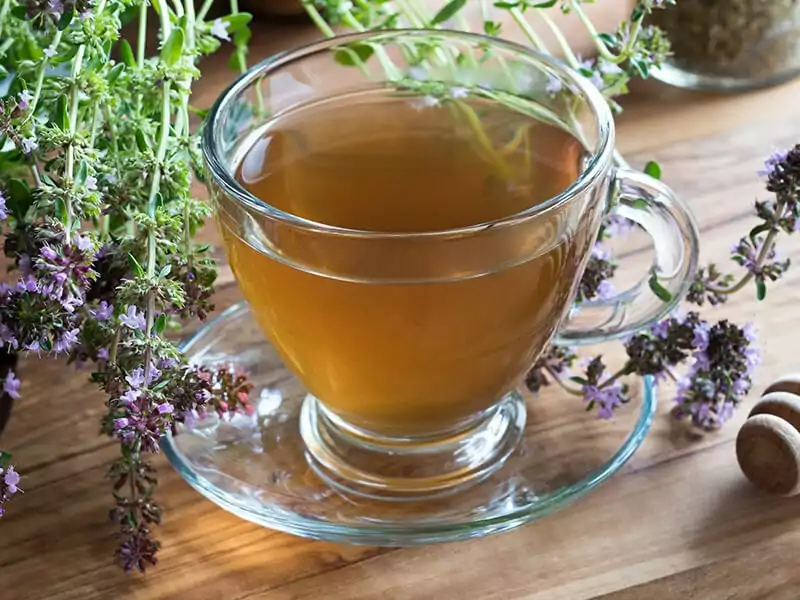
Creeping thyme grows close to the ground, so it looks like bunches of weed with pink-purple flowers. Creeping thyme has a slight mint flavor that will remind you of a cup of mint tea.
This thyme has such a significant scent that it grows with the beekeeping area and yields unique mint-thyme-flavored honey.
5. Silver Thyme (Thymus × Citriodorus)
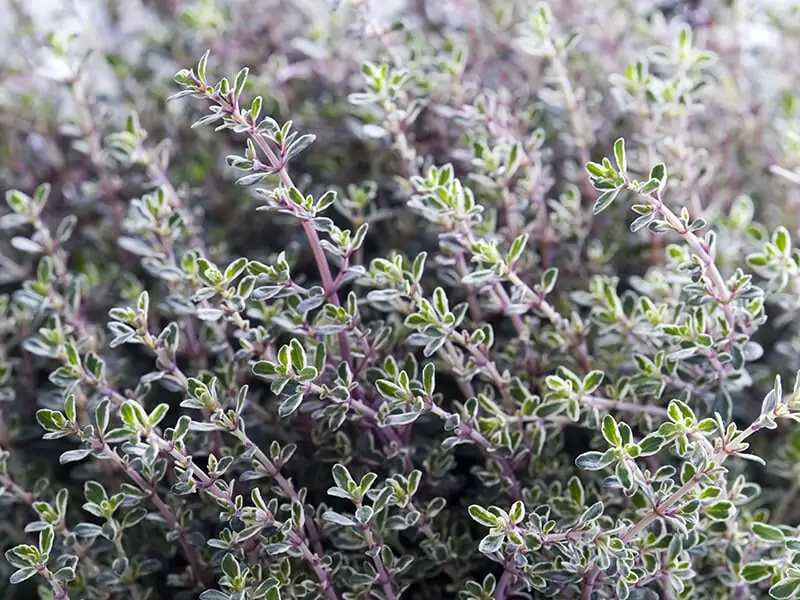
Silver thyme is a bushier version of lemon thyme. It grows low on the ground, having small green leaves with silvery-white spots on them. You can taste a more robust thyme flavor and a bit of lemon acidity; this is the best thyme to use in your dishes.
You can use it in flavoring ice cream. This thyme is also perfect to eat alongside duck breast, chicken, and beef dishes, such as stews, soups, marinades, or even sauces.
6. Pennsylvania Dutch Tea Thyme (Thymus Pulegioides)
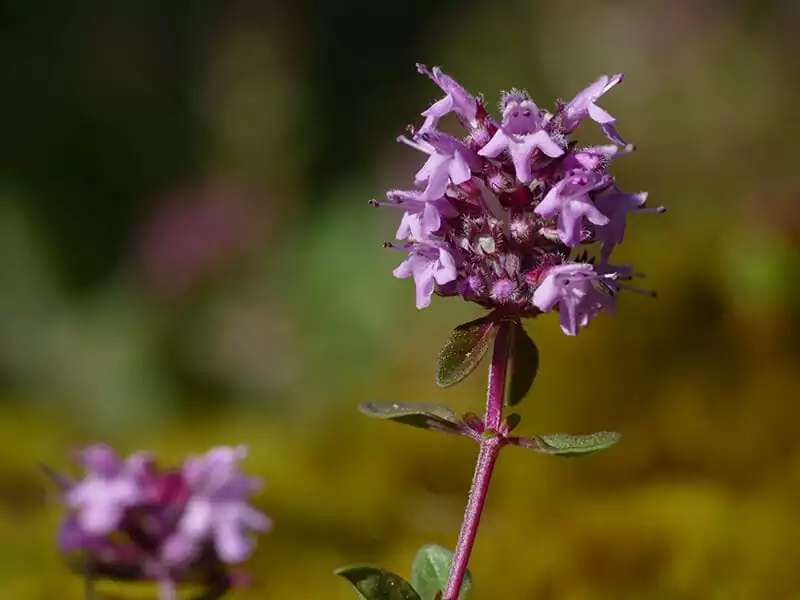
Pennsylvania Dutch tea thyme comes from the “pulegioides” genus, with larger dark leaves and a stronger scent. You can use them in every typical thyme dish since they have similar flavors but more content; they also work well with other herbs.
This thyme is ideally used in tea; that is why it has “tea” in its common name.
7. Orange Balsam Thyme (Thymus Vulgaris)
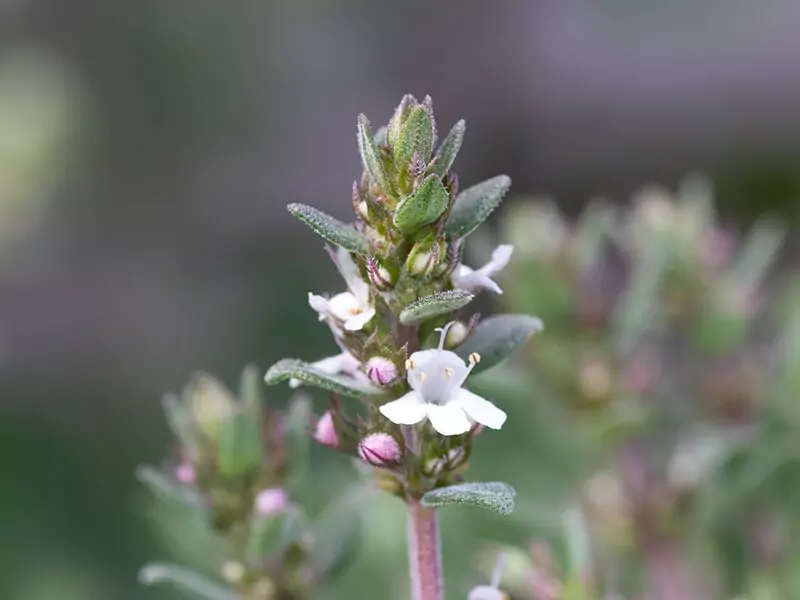
This orange balsam thyme can be used as ground cover thanks to its small size, and the woody stem can bear a strong stepping force. Its smell is orange zest-reminiscent and more pungent than English thyme and also has a sweeter taste.
You can freely use it in any dish or recipe that requires thyme.
8. Juniper Thyme (Thymus Leucotrichus)
This type of thyme has another romantic name, moonlight thyme, maybe because its leaves have grayish-green color. Juniper thyme also has its linear-lanceolate leaves covered with dense hairs. This thyme is significantly more sharp and spicy than the others.
You can use it in any thyme dish, and you only need to remember that its taste is spicier than average.
9. Hi-Ho Silver Thyme (Thymus Argenteus)
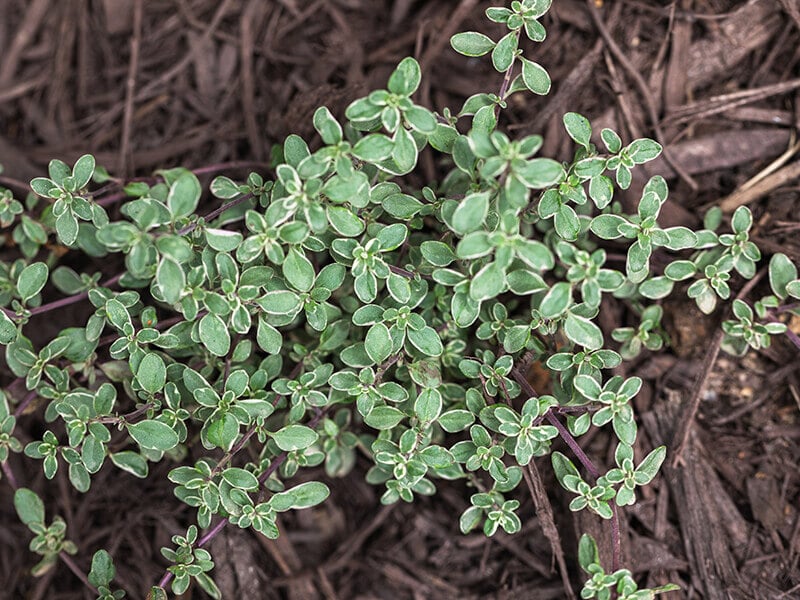
Hi-Ho silver thyme differs from the silver thyme; its leaves are thicker and unevenly distributed variegated white color. This variety can well bring the original thyme taste and is ideal for fish and poultry recipes.
You can mix it with parsley and lemon on those dishes since they are ideally paired with the other.
10. Italian Oregano Thyme (Thymus Vulgaris)
Italian oregano thyme has longer stems than ordinary thyme and grows like messy purple flower bushes. It has a strong oregano scent and flavor with a light thyme taste, just like its name.
I suggest using it in a herb bowl or replacing oregano and thyme in your savory dishes. Italian oregano thyme can be a good alter for common thyme in cooking.
11. German Thyme (Thymus Vulgaris)
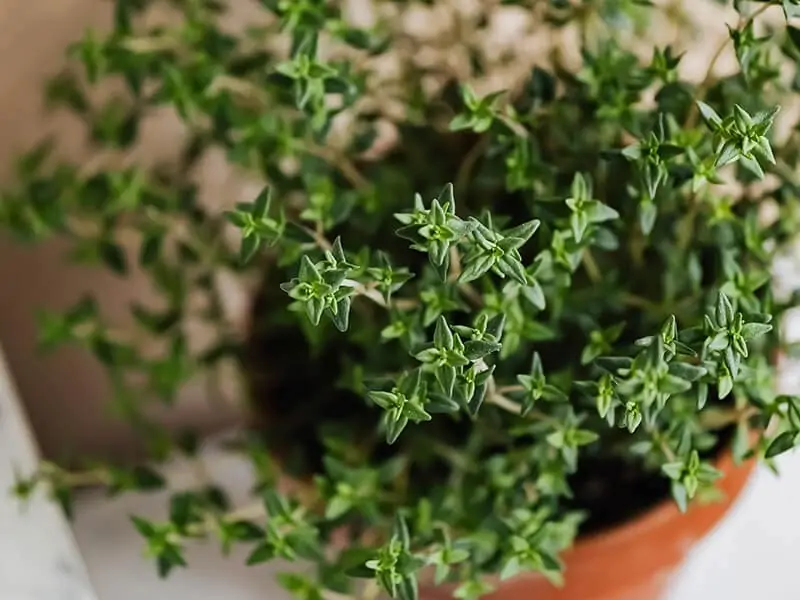
German thyme is a perennial variant of “Thymus Vulgaris”; it is usually called “winter thyme”. It has small, rounded leaves, quite hardy stems, and contains packs of beautiful flavors: a bit dainty or elegant thyme taste and very aromatic.
It tastes incredible in various dishes, soups, stews, gravies, casseroles, or even teas.
12. Foxley Thyme (Thymus Pulegioides)
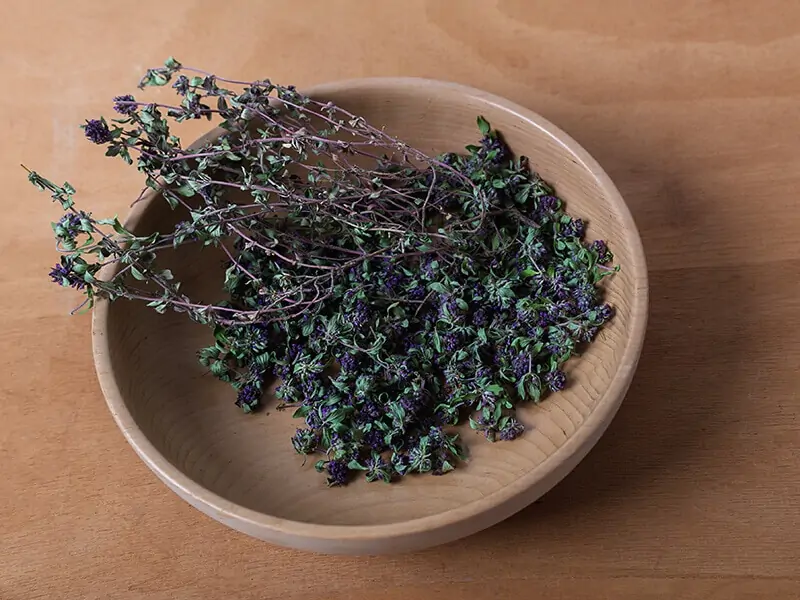
This Foxley thyme has flower-like broad leaves; you can see it is variegated green and cream. Its tastes resemble other “pulegioides” on this list: the robust flavor, pleasant savory taste, and gorgeous fragrance.
Foxley thyme is also used in teas (mix with other herbs), seasoning meats, vegetables, and soups. This thyme is also specially used to support your immune system with disinfection and reduce fungus in your living area.
13. Thyme Lemon Variegated (Thymus Citriodorus Aureus)
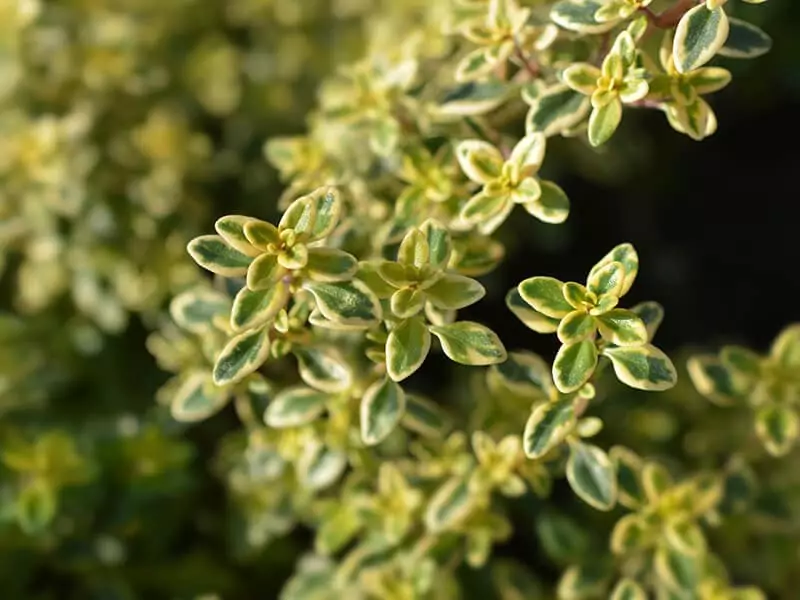
Thyme lemon variegated or golden lemon thyme has golden, attractive variegated leaves and bushy growth. It gives a refreshing, delightful lemon scent and even attracts bees and butterflies.
Therefore, thyme lemon variegated can be grown in the beekeeping areas to flavor honey, and of course, tasted well in both savory and desserts.
14. Conehead Thyme (Coridothymus Capitatus)
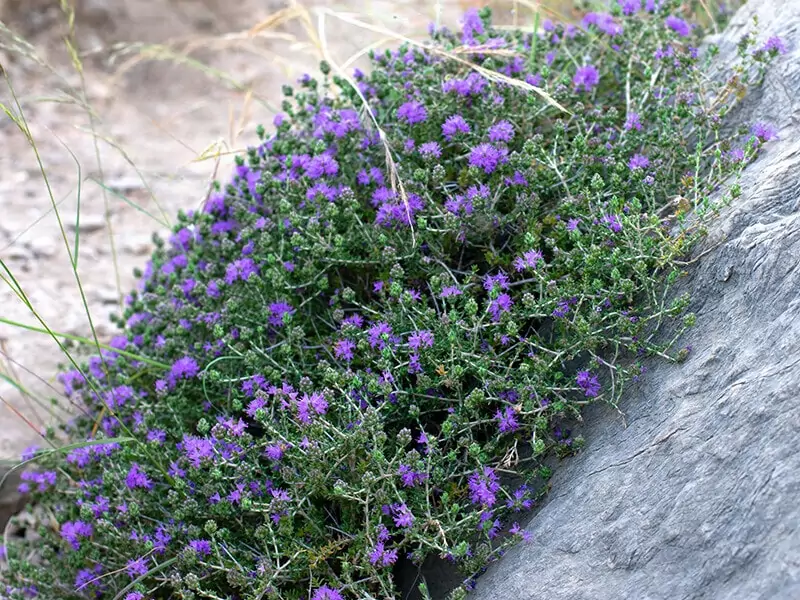
Conehead thyme is taller than the average of thyme bushes. It typically has thick, fleshy leaves and contains a hot spicy taste inside. It can have a lot of flowers, and its smell is intensely aromatic.
The leaves are frequently used to flavor roasts, grills, pickles, and tea. It is also an essential ingredient for Za’atar.
There are many other types of thyme, and most of them are very easy to grow, either ornamental or culinary; having a small thyme garden will help you have thyme available anytime.
Don’t know how to take care of your garden thyme? This video won’t make you down!
Incredible Health Benefits From The Humble Thyme
Since hundreds of years ago, thyme has been used in many applications in life, not only in culinary but also in medicinal applications. Thyme, with its beneficial compounds and aromatic essential oils, can provide excellent health benefits. (2)
Let’s find out what they are!
1. Thyme – Natural Respiratory Protector
Thyme and its crude oil extracts have long been used to reduce mild respiratory system reactions to the environment, such as coughs and sore throats. It is especially effective by drinking, so when you feel a cold symptom, drink 1 cup of thyme tea.
2. Support The Immune System And Disinfection
Thyme contains many vitamins A and C to help support a healthy immune system against common illnesses. At the same time, it also has many compounds that are highly resistant to mold and bacteria that help reduce infection symptoms.
3. Natural “Perfume” To Up Your Mood And Release Stress
Not only having an excellent lemony, mint smell that can keep your house away from harmful pests, rats, or else, a pleasant scent of thyme extracted oil can help you to reduce stress and up your mood effectively. It is because it has carvacrol, a neural supporting compound.
4. Thyme To Protect Your Hair
Evidence shows that the mixture of thyme extracted oil and medicinal herbs can help people treat alopecia areata (hair loss).
Note: Thyme is relatively safe to use by any person. A caveat is that thyme is proven to slow blood clotting, which is quite dangerous during surgery. So if you are about to have surgery, be sure to consult your doctor.
Mind-Blowing Methods To Preserve Your Fresh Thyme
Even though using dried products is convenient, using fresh ingredients always tastes better. I will briefly suggest you keep your store-bought thyme available longer right away.
1. In The Cool Compartment Of The Refrigerator
There are 2 options for you if you want to store your thyme in the cool compartment, and each one has a different storing time.
Using Ziploc Bags
- Keep your thymes dry as they are before doing.
- Roll your thymes up with a slightly absorbent paper tower.
- Put all of them into a Ziploc bag or an airtight container and seal them tightly.
- Place them in the cool compartment, and they will last for 10 to 14 days.
Using A Jar Or Drinking Glass
- Fill your jar or glass with an inch of freshwater.
- Pick up small thyme branches off the main stem or root and place them straight into the jar.
- Put your jar into the cool compartment just like that (without the lid)
- Change the water frequently if you see the watercolor is changing, and your thymes can last for up to 3 months.
2. In The Freezer
You can even store your thyme for a more extended period in the freezer, more than 6 months. After considering all the options, I will suggest to you the most effective way, which is making an “iced thyme bomb”.
- Wash your thyme thoroughly and collect the leaves out of stems.
- Patch them dry.
- Quickly spray some oil onto your ice cube tray.
- Put 1 or 2 teaspoons of thyme leaves into each ice cube tray slot.
- Pour into your tray with high-quality oil, or you can use garlic-flavored oil to enhance the taste better.
- Put the tray into the freezer, and your thyme will be ready for any soups, stews, and sauces for the next 6 months.
What To Pair With Thyme?
Do you know what is best to pair with thyme? Although thyme is relatively easy to use and works well with various ingredients, learning how to use it properly can help you prepare a better meal.
With Other Herbs
Surprisingly, thyme can go very well with many herbs; they support, blend and mingle with each other to become an outburst to your taste.
- Basil
- Oregano
- Parsley
- Rosemary
- Mint
- Lavender
Thyme Being Friend With Spices
These spices are perfect matches with thyme; you can see them together in many dishes.
- Garlic
- Nutmeg
Amazing Thyme Pairing-Food
Thyme is ideally to be used with these types of food. Let’s check and give your opinion!
- Vegetables: Beans, cabbage, carrots, corn, onions, eggplant, tomatoes, potatoes, winter vegetables
- Meats: Chicken, fish, lamb, beef
- Dishes: Soups, stews, sauces
Perfect Thymes Substitutes You Should Know
Thymes have always been the key ingredients in many cuisines around the world. If you accidentally run out of thymes (dried or fresh), don’t panic, you can try these conversion ratios, and you can still have a good meal.
Thyme For Some Mouth-Watering Recipes
Thyme can work so well in various dishes and with numerous ingredients, it will be a miss if I don’t suggest some incredible dishes to extend your thyme menu. Are you curious about that?
1. Thyme-Roasted Vegetables
I will start this list with this thyme-roasted vegetable recipe. Only one word can describe the taste of this dish, yummy! Don’t worry if you are not into vegetables or your children always refuse to eat them; this recipe might change your mind.
2. Cream Lemon Chicken With Thyme
Thyme works so well with poultry that I absolutely need to add a chicken dish to this list. And I chose cream lemon chicken with thyme! If you have chicken breast right now – done! Milk? Done! Then you should try to make it now.
Other ingredients can be found in your pantry. Imagine a pot of beautifully cooked chicken flavored with lemon and thyme and dipped inside the creamy sauce. Delicious!
A fantastic recipe for a cozy dinner party with your family. Check it out!
3. Roast Beef With A Paprika And Thyme Crust
You can not ignore beef when it comes to thyme recipes. Today I will provide you with another idea of thyme-beef recipes, roast beef with paprika, and thyme crust.
Juicy on the inside, crunchy crust on the outside, the exceptional taste of thyme mixed with paprika makes your beef shine.
4. Lemon Thyme Ice Cream
This lemon thyme ice cream will definitely blow your mind! You can feel so much refreshing aroma of thyme and lemon in a spoonful of ice cream. The rich taste of milk blends so well with the other ingredients that make you unstoppable crave for it.
It requires no particular skill to make, and you can also change sugar into honey for a healthier option.
Easy step-by-step guidance for your perfect Lemon Thyme Ice Cream. Watch this video:
5. Tomato & Thyme Cod
Last but not least, the last recipe will be a fish dish, tomato & thyme cod. If you are finding a good idea for your healthy and balanced diet, you should try it. The total calories for this dish are negligible, and all the ingredients are absolutely healthy.
If you want to use less salt, using thyme instead is also OK.
FAQs
I know that you might have other questions about thyme. Although I have provided much information about them, the world of thyme is broad, and there are always some other concerns. Therefore, let’s keep following and find out!
Thyme For Some Good Tea!
Have you found an appropriate answer for the question “ What does thyme taste like?” now? I hope you did. Thyme brings much more benefits to you and me than you have ever expected, not only to enhance the taste of our food.
The world of thyme is also diverse, and it just gets more and more excited digging into them. With all the information I have provided to you today, you can use it in your cooking in the future.
If there is any question or any experience you want to share, you can do it anytime. After all, it’s “thyme” for some good tea now!
References
- En.wikipedia.org. 2021. Thyme – Wikipedia. [online] Available at: <https://en.wikipedia.org/wiki/Thyme#Aroma_components>.
- Healthline. 2021. 9 Health Benefits of Thyme. [online] Available at: <https://www.healthline.com/health/health-benefits-of-thyme#Thyme-for-good-smells>.
